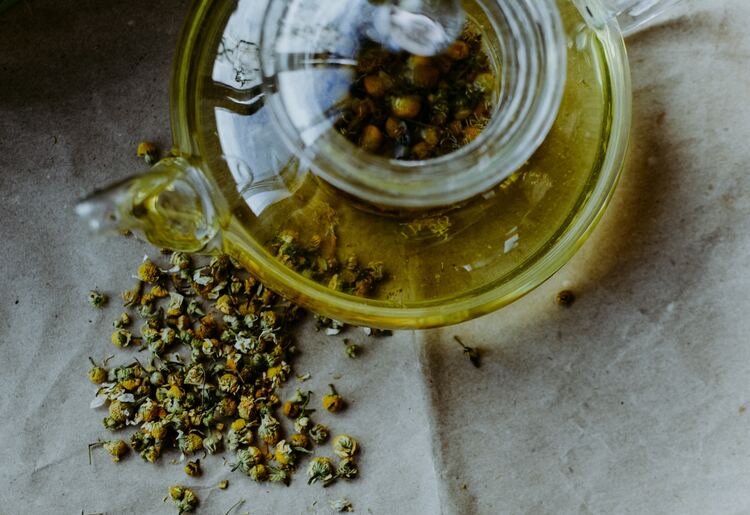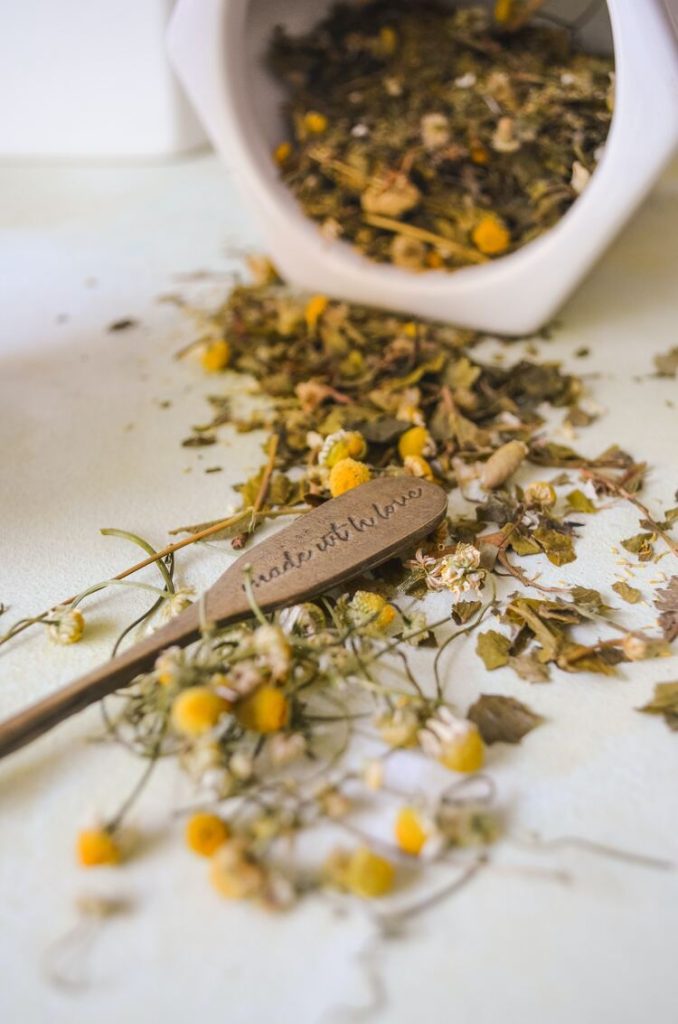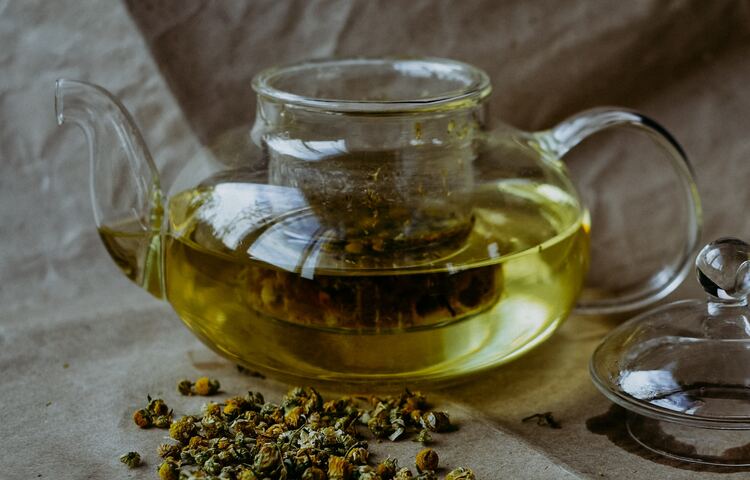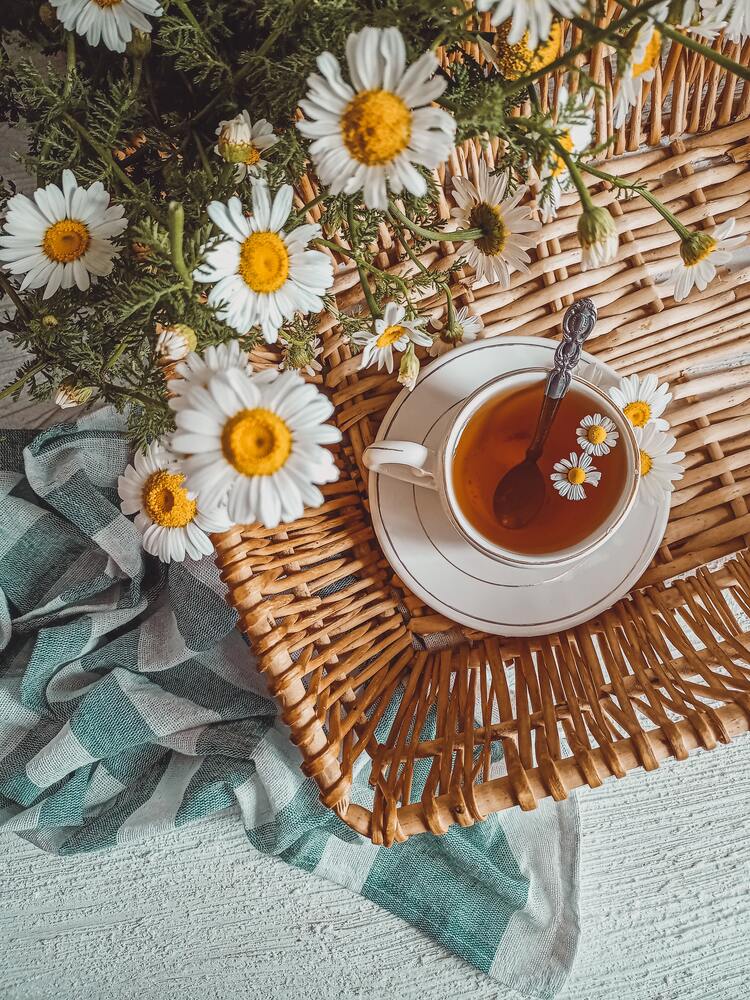Sipping a chamomile tea can instantly transport you to a world of relaxation and tranquility. But have you ever stopped to think about what does chamomile tea taste like? If you’re new to the world of chamomile tea or simply curious about its unique flavor, this article is for you.
Chamomile tea is made from the chamomile plant’s dried flowers, giving it a delicate and subtle taste profile. When you take a sip, you’ll likely notice a gentle sweetness with a hint of floral notes. As you continue to enjoy your cup, you may also detect a slight earthiness and an ever-so-subtle hint of apple. These various flavors fuse to create the calming and soothing experience that chamomile tea is known for.
The taste of chamomile tea may vary depending on various factors such as the quality of the tea and the brewing process.
We have all the details about this popular tea in this article. So, keep reading to find out more!
Please note: This article contains affiliate links, meaning I may earn a commission if you make a purchase by clicking a link. Of course, this comes at no extra cost to you and helps me keep offering readers solid information.

What is Chamomile Tea?
Chamomile tea is a popular herbal tea made from the flowers of the chamomile plant, scientifically known as Matricaria chamomilla. It is known for its soothing properties, making it a popular choice for relaxation and promoting sleep. As a matter of fact, this tea has been used for centuries for its medicinal benefits.
The tea is made by infusing dried chamomile flowers in hot water. The flowers release their essential oils and other beneficial compounds into the water, creating a fragrant and flavorful beverage.
The chamomile plant is native to Europe, West Asia, and North America. Derived from the Greek words “chamos” (ground) and “milos” (apple), the delicious smell of chamomile tea is reminiscent of an apple orchard.
What Does Chamomile Tea Taste Like?
Basic Flavor Description
Imagine sipping on a warm and comforting cup of chamomile tea. The first taste that reaches your palate is a gentle blend of earthy and floral flavors. This soothing drink has a mild taste, making it perfect for evenings or moments when you seek relaxation.
Earthy and Subtle Sweetness
As you take in each sip, you’ll notice an underlying earthy tone and subtle sweetness. This delicate balance of flavors makes chamomile tea a popular choice for those who prefer a mild yet flavorful experience.
Floral Tones and Hints of Apple
Further tasting reveals the delightful floral tones in chamomile tea. It’s these floral notes that make the tea truly unique. Additionally, you may also detect a hint of apple. This subtle fruitiness adds another dimension to the overall flavor, enhancing the tea’s natural sweetness and providing a refreshing finish.
The Role of Aroma
Finally, don’t underestimate the importance of aroma when appreciating chamomile tea. As you breathe in the scent, you’ll discover that the fragrance is integral to the overall taste experience. The calming aroma further enhances the earthy and floral qualities, creating a complete sensory experience.

Comparing Chamomile Tea to Other Flavors
Comparisons to Lavender and Lemon
You may notice subtle hints of lavender and lemon when you sip a cup of chamomile tea. It’s not uncommon for your palate to pick up on these flavors, as chamomile tea offers a delicate yet aromatic mix of these floral and citrus notes. While lavender shares a calming quality with chamomile, the resemblance to lemon lends a light, refreshing aspect to your tea-drinking experience.
Similarities with Green Tea
Though chamomile tea is an herbal infusion, you may find some similarities to green tea in terms of taste. Both teas have a mild, soothing flavor and a hint of natural sweetness. However, chamomile tea doesn’t have the grassy, earthy tones often associated with green tea. Instead, the floral and citrus notes give chamomile a distinct taste that differentiates it from its green tea counterpart.
Contrast to Bitter Teas
Chamomile tea provides a delightful contrast to bitter teas such as black tea and some types of green tea. The natural sweetness makes it a pleasant option for those who shy away from more robust flavors.
Enhancing the Taste of Chamomile Tea
Using Sweeteners and Citrus
To heighten the natural sweetness of chamomile tea, experiment with adding sweeteners like honey or sugar. Honey pairs especially well with chamomile, lending it a rich and smooth taste. Try incorporating a splash of lemon juice or a squeeze of fresh citrus for a zesty twist. This complements the tea’s flavor and adds a refreshing tang. You can also consider:
- Adding a slice of lemon or orange to your cup
- Combining several drops of 100% orange or lemon essential oils
- Grating a bit of fresh ginger to add a delicate spice kick
Blending with Other Herbal Teas
Enhance the taste of chamomile tea by blending it with other herbal teas such as mint or vanilla. Mixing different flavors can create a unique and personalized taste exclusive to your palate.
Here are some common combinations:
- Chamomile and mint for a soothing and cooling effect
- Chamomile and lavender for a calming and floral taste
- Chamomile and vanilla for a smooth and creamy flavor
Experimenting with Milk and Cream
Although not as common as with other types of tea, you can try adding milk, cream, or even a dairy-free alternative such as almond milk to your tea. This creates a creamy and satisfying texture, perfect for sipping on a cold day or as a comforting nightcap. A few suggestions for experimenting with milk or cream include:
- Use warmed milk or cream to prevent the temperature of your tea from dropping too quickly
- Stirring in a small spoonful of vanilla extract to add depth to the flavor
- Combining milk or cream with a sweetener to balance the taste and enhance the overall sipping experience

Brewing Chamomile Tea Correctly
Steeping Time and Temperature
To enjoy the best chamomile tea, consider the steeping time and temperature. Use water heated to around 200°F (93°C), just below boiling. Pour the hot water over your chamomile and steep it for 5 to 7 minutes. This will infuse the delicate flavors and health benefits into the water.
Loose Leaf vs Tea Bags
You can use either loose-leaf chamomile or chamomile tea bags. Here are some differences between the two:
- Loose Leaf: Often have larger, whole flowers, resulting in richer flavors and potency.
- Pros: Stronger flavor, can control serving size.
- Cons: May require a tea infuser or strainer.
- Tea Bags: Convenient and pre-measured, but quality can vary.
- Pros: Easy to use and dispose of.
- Cons: Some may contain lower-quality chamomile and might have less potent flavors.
Choose what works best for your preferences and needs.
Hot or Cold Brewing
Chamomile tea can be enjoyed both hot, or cold. Here’s how to make each version:
- Hot Brewing: Follow the steeping time and temperature instructions as mentioned above. Strain the tea (if using loose leaf) and enjoy once it reaches your desired temperature.
- Cold Brewing: Add chamomile to cold water and let it sit in the fridge for at least 12 hours. The flavor will be milder, but it’s a refreshing and low-effort way to enjoy chamomile tea.
Ultimately, brewing chamomile tea correctly comes down to your personal preferences for temperature, steeping time, and whether you choose loose leaf or tea bags. Experiment with these factors to find the perfect cup for your taste.
Popular Varieties and Blends
Traditional Pure Chamomile Tea
When you think of chamomile tea, you might picture a warm cup of soothing golden liquid.
If you’re looking for pure chamomile tea, consider exploring varieties from Croatia. Renowned for their pristine plant-growing conditions, Croatian chamomile teas offer a rich and authentic experience.
Chamomile Blends for Unique Flavors
For those seeking unique flavors or added benefits, consider sipping on chamomile tea blends. These concoctions combine chamomile with other ingredients like herbs, fruits, and spices to create delightful and refreshing new tastes. The most popular blends include:
- Chamomile and Mint: Adding mint provides a cooling sensation, making it an excellent choice for iced tea. Additionally, mint aids digestion and makes for a soothing after-dinner drink.
- Chamomile and Lavender: This blend boasts a beautiful and relaxing aroma. The combination of chamomile and lavender promotes better sleep and reduces stress levels.
- Chamomile and Lemon Balm: The refreshing citrus flavor from the lemon balm complements the chamomile, creating a perfect blend for a sunny afternoon. Moreover, lemon balm is known for its antioxidant properties.
- Chamomile and Echinacea: This immune-boosting blend combines the natural benefits of echinacea with the calming taste of chamomile, helping you maintain overall wellness while enjoying a delicious cup of tea.

Health Benefits of Chamomile Tea
Chamomile offers several potential health benefits due to its unique chemical composition. While scientific research is ongoing, some of the commonly mentioned health benefits associated with chamomile include:
- Promoting sleep and relaxation: Chamomile is often used as a natural remedy for insomnia and sleep disturbances. Its mild sedative properties can help relax the body and mind, making it easier to fall asleep.
- Reducing anxiety and stress: Chamomile tea is known for its calming effects, which may help reduce anxiety and stress. Some studies suggest that chamomile can act as a mild tranquilizer, promoting relaxation without causing drowsiness.
- Soothing digestive issues: Chamomile has been traditionally used to alleviate digestive problems such as indigestion, bloating, and stomach cramps.
- Anti-inflammatory properties: Chamomile contains anti-inflammatory compounds that may help reduce inflammation in the body. This can be beneficial for conditions such as arthritis, inflammatory bowel disease (IBD), and skin irritations.
- Skin care benefits: Chamomile is often used in skincare products due to its potential anti-inflammatory and antioxidant properties. It may help soothe skin irritations, promote wound healing, and provide relief from conditions like eczema and dermatitis.
- Boosting the immune system: Chamomile contains antioxidants that can help support the immune system and protect the body against oxidative stress.
As with any herbal product, it’s recommended to consult with a healthcare professional before using chamomile, especially if you have any underlying health conditions or are taking medications.
Also, when exploring chamomile blends, pay attention to any dietary restrictions or allergies you may have. For example, if you’re nursing, consult with a healthcare professional before trying new blends or ingredients.
Chamomile Tea Buying Recommendations
Now that you have sharpened your knowledge about chamomile tea, it is time to enjoy the tea. Here are our top recommendations.
CERTIFIED Organic (USDA seal) Chamomile Flowers Herbal Tea

Taylors of Harrogate Organic Chamomile Herbal Tea

Cederberg Tea Company Organic Chamomile Tea

Smith Teamaker | Chamomile, Rooibos, Hyssop & Rose Petals

Harney & Sons Master – Herbal Blend of Chamomile, Lavender, and Cornflowers

Gardenika Organic Sleep Loose Leaf Tea with Chamomile and Lavender Flowers

Alright, friends, this is it for now. Remember to experiment with different blends and varieties, and discover the chamomile tea that suits your taste buds the best. Happy sipping!
To you, what does chamomile tea taste like?
More About Herbal Tea
What Does Peppermint Tea Taste Like?
What Does Mint Tea Taste Like?
What Does Ginger Tea Taste Like?
What Does Lemon Balm Tea Taste Like?
What Does Lavender Tea Taste Like?
What Does Mullein Tea Taste Like?
What Does Raspberry Leaf Tea Taste Like?